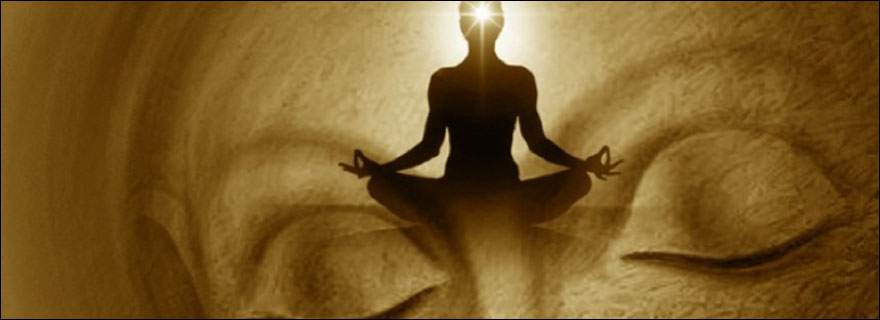Raja Yoga; Royal Path to Self-Realization
Raja Yoga; Royal Path to Self-Realization
Raja Yoga – Self Realization is the ultimate goal of life. It may take millions of years of incarnating upon Earth for reaching this goal in a normal way through workings of Nature, but our great wise sages devised certain short-cut routs to reach this goal in lesser time.

The Raja Yoga is also called as the Ashtaanga Yoga. The word Ashtaanga is composed of two words viz. ‘Ashta’ meaning eight and ‘Anga’ meaning limbs or parts thus the Raja yoga having eight steps, limbs or parts is so called.
The Raja Yoga was propounded by India’s great rishi Patanjali. It is a unique system and rather the king of all systems of self-realization, which is why it is called the Raja or King. The system is a scientific one and not confined to any one religion or sect. It is a universal system.
The eighth or last rung of this ladder of self-development as per Patanjali is ‘Samadhi’. As per the Yoga Sutra 3.3 of Patanjali:
“Tad evaarthamatranir bhasamsvarupashunyamivasamadhih”
When only the essence of that object, place, or point shines forth in the mind, as if devoid even of its own form, that state of deep absorption is called deep concentration or samadhi, which is the eighth rung.
Meaning of each word of the above Sutra is as follows:
Tad means ‘that’
Eva means ‘the same’
Artha means ‘object’or ‘point’ (Object of idea on which one meditates)
Matra means ‘only’ or ‘alone’
Nirbhasam means ‘shines forth’ or ‘appears’
Svarupa means ‘own form’ or ‘own nature’ (sva= own; rupa= form, nature)
Shunyam means ‘devoid of’ or ‘empty’
Iva means ‘as if ‘or ‘as it were’
Samadhih means result of meditation or its highest (trance) state
Now let us look at all the eight limbs of this wonderful system, the eight limbs or steps are:
1 Yama, 2 Niyama, 3 Asana, 4 Pranayam, 5 Pratyahara, 6 Dharna, 7 Dhyana, 8 Samadhi
1 Yamas- These are five things which must be followed and become part of one’s conduct in life:
• Ahimsa: Non-violence or non-harming others
• Satya: Truthfulness or not telling lies
• Asteya: Non-stealing, abstention from stealing things belonging to other people.
• Brahmacharya: In order to live in constant awareness of the highest reality, live as a celibate.
• Aparigraha: Non-possessiveness, not possessing unwanted things and not accepting gifts from others.
2 Niyama- These are five things which must be observed.
• Shaucha: Purity of bodyby observing cleanliness
• Santosha: Contentment
• Tapas: Austerity
• Swadhyaya: Self-study through study of scriptures
• Ishwara Pranidhana: Surrender to God’s will
3 Asana – Steady posture. Practice sitting steadily in a comfortable posture for long hours. The practitioner of Raja Yoga need not sit forcibly in lotus or cross-legged posture. In the beginning one can sit in any posture in which one feels comfortable and relaxed. Just keeps your spine erect even if you sit on a chair with both feet resting on a mat on the floor.
4 Pranayama – Control of ‘prana’ or life force through regular practice of certain breathing exercises. You must follow the ancient breathing exercises starting with ‘Nadi Shodhan Pranayam’. Take guidance of an expert.
5 Pratyahara – Withdrawal of the senses. Normally the life energy flows out through one’s senses. Through practice of Pranayama and righteous living the flow reverses.
6 Dharana– Concentration, It is focusing of attention on one object or subject for meditating upon it.
7 Dhyana– Meditation, to meditate on previously selected object or subject.
8 Samadhi – Super-conscious state, one enters this trance state through regular practice of meditation.
Article by: Jyotirvid Pawan Kumar
You May Also Like
Effect of Mantras over Mind and Senses
Malavya Yoga in William Shakespeare’s Birth Chart
Latest Articles
- How Each Zodiac Sign Manages Money: Traits, Habits, and Planetary Influence
- Zodiac Signs and Money Management
- Transit of Mercury into Leo on 27 June 2025
- Transit of Mercury into Cancer – Effects and Remedies
- Sun Transit in Gemini 2025 – Effects on All Zodiac Signs
- Jupiter is combust in the Gemini sign (9th June, 2025)
- Mercury’s transit in Gemini (6th June, 2025)
- Transit of Venus in Aries (31 May, 2025)
© 2025 by Truthstar Future Vision Pvt Ltd All Right Reserved



